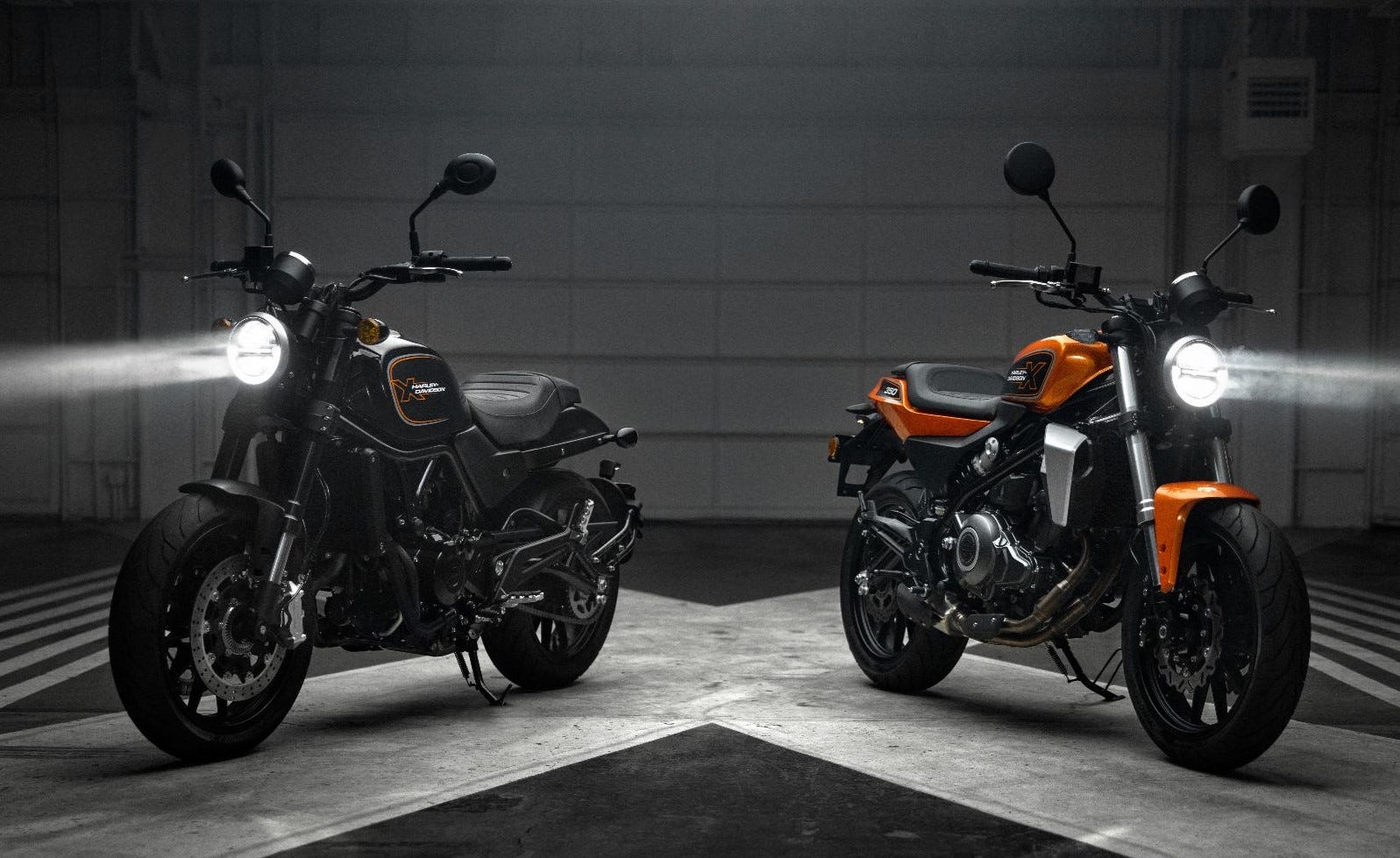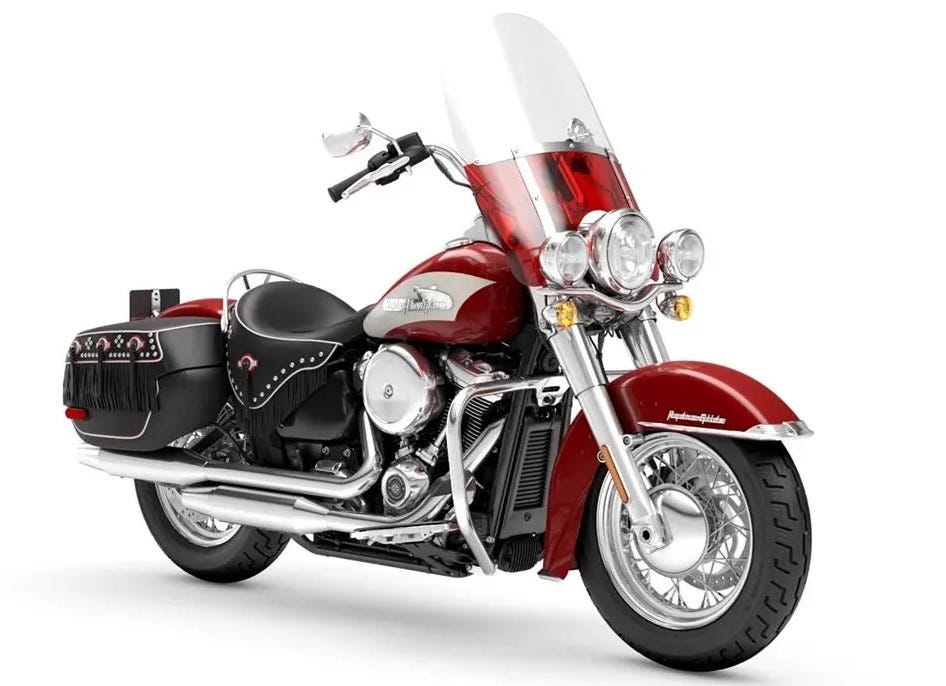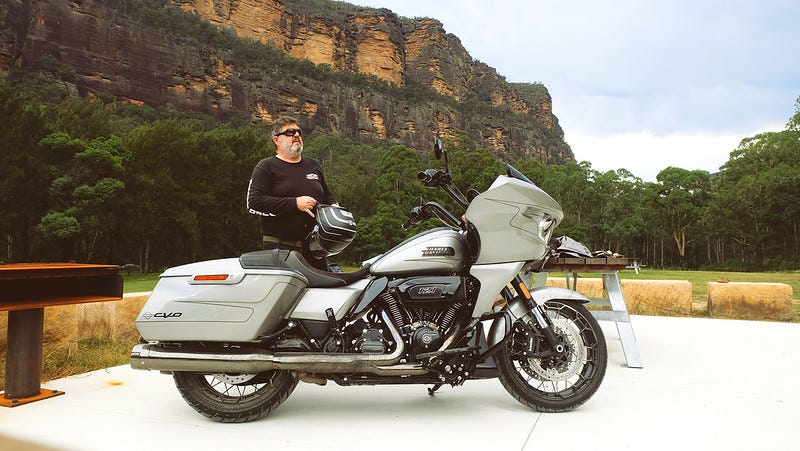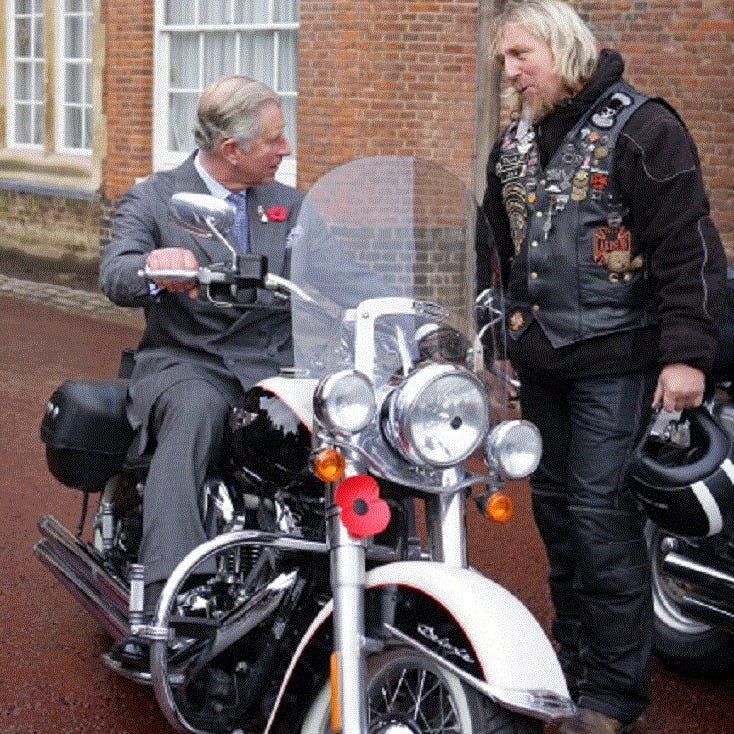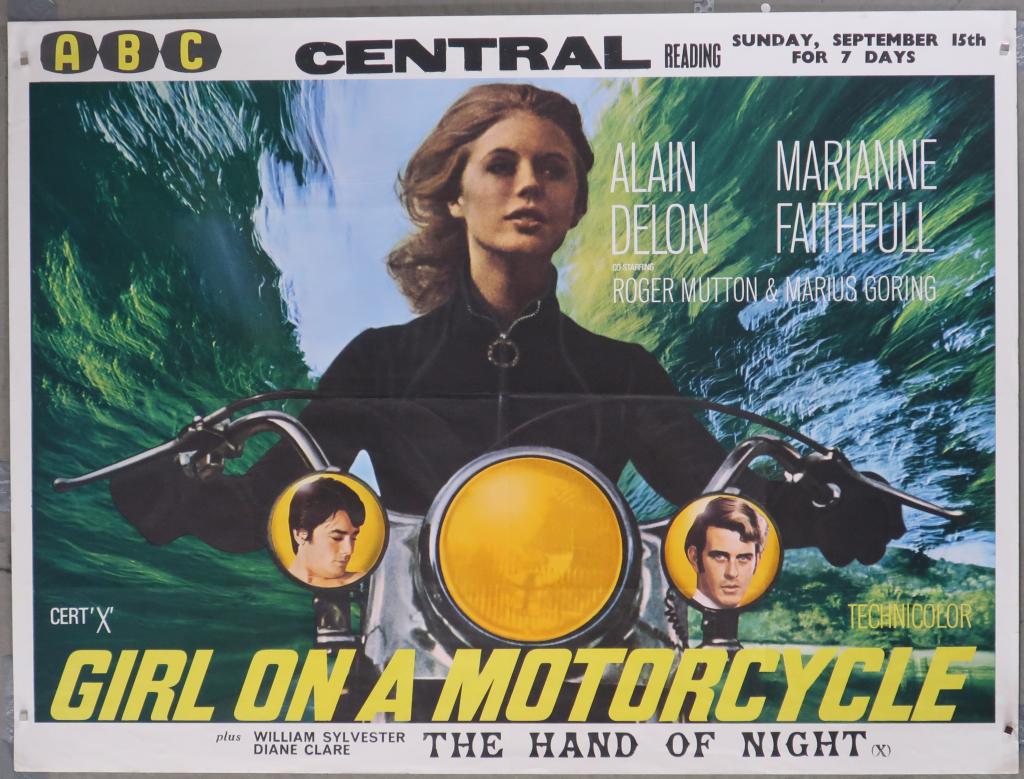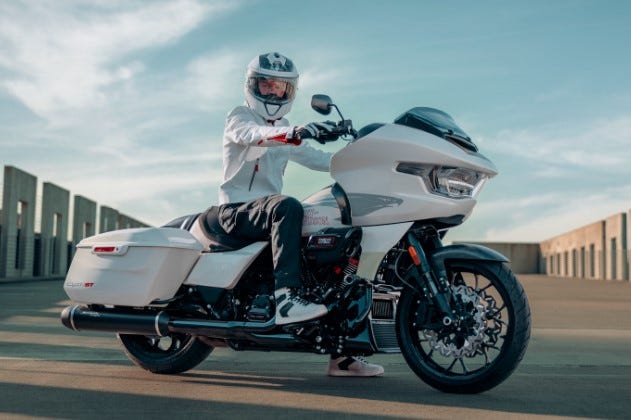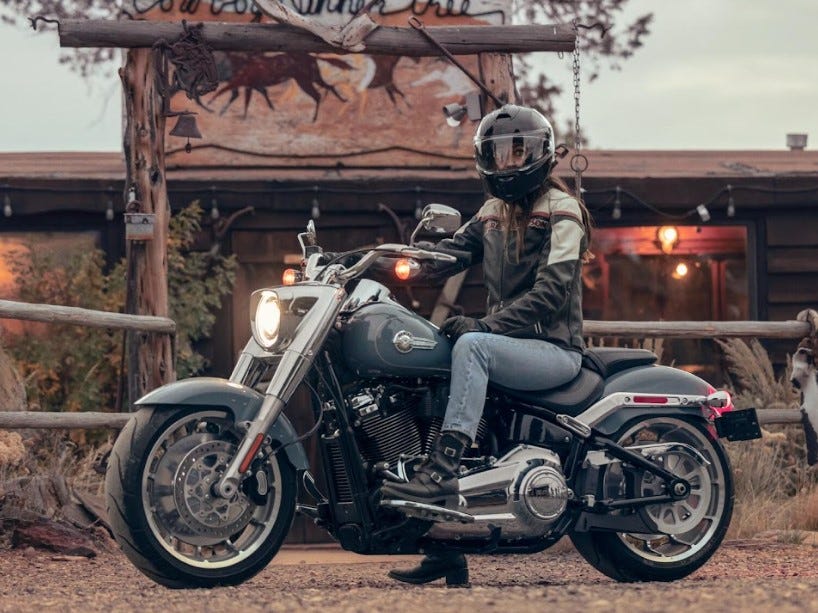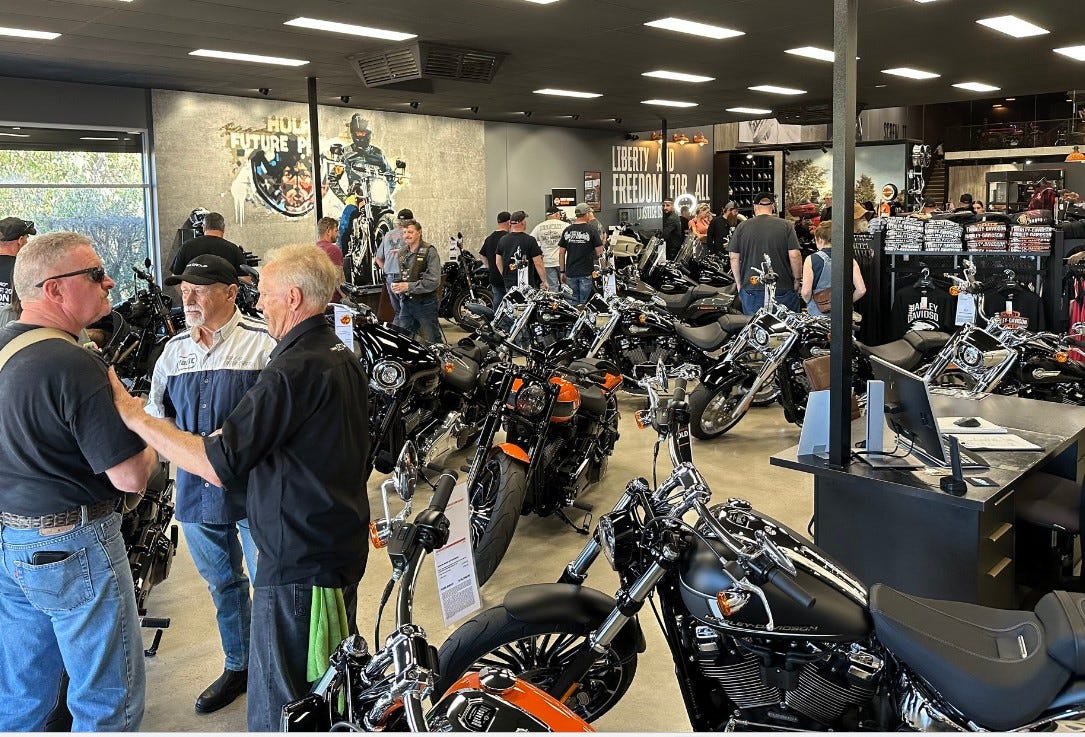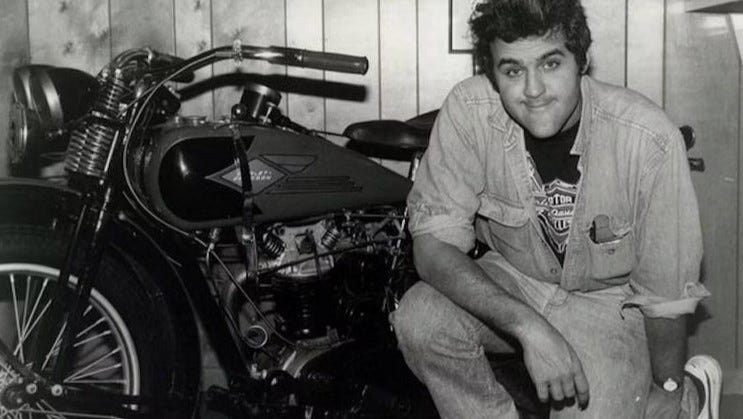Conceived as a stylish, lightweight sports bike it has remained the longest-lived motorcycle line in the entire Harley-Davidson family. Derived from the side-valve 750cc Model K, introduced in 1952, the Sportster was known as the XL series until last year (2021) and had surprisingly little modification over more than half a century.
The 883 cc (53.9 cu in) and 1,200 cc (73 cu in) Evolution engines replaced the older ‘Ironhead’ in 1986 and the transmission uprated to 5-speed into 1991. Now, when 65 normally signifies retirement, the Sportster is undergoing its most radical reworking ever.
Earlier this year, the Revolution Max engine broke cover in the guise of Pan America and had the critics in a tizzy. This engine is a complete departure from the archetypal air-cooled, 45-degree V-Twins that has so defined the Milwaukee brand for decades. As we found in Pan America, it is lively, smooth and full of surprises.
Demonstrating the versatility of this new powerplant, the 1250cc, DOHC 60-degree, water-cooled V-Twin is designated T for the Sportster S, whereas the Pan America was S. This particular RevMax engine is different in that it produces more torque at lower revs and it actually produces less power up high than in Pan Am indicating, in my mind, its suitability for urban environments rather than long-legged highway cruising.
The Sportster S is a good 30kg lighter than Pan Am and despite some structural similarities, looks for all the world like a completely different bike. The RevMax engine is a structural element of the chassis, eliminating a traditional frame. H-D tells us this feature significantly reduces weight and results in a very stiff chassis.
We could prattle on all day about the tech stuff which you have probably read already. But take note of the claim that H-D’s Variable Valve Timing (VVT) does not require periodic adjustment, so common in other engines thanks to hydraulic lash adjusters.
So let’s throw a leg over and see what all the fuss is about.
At the Sydney launch in December, it was a bit of a choreographed affair and not a great indication parading around in the traffic and rain. So I was delighted to get the chance to unleash the beast on a proper weekend outing as an owner may choose to do. To this end, I headed north out of Adelaide into familiar territory.
On the twisty, serpentine roads of the Adelaide Hills, the new Sportster can really show its mettle. I've ridden all kinds of bikes on these roads and the new 'Sporty' is quite at home. The fat, specially-designed Dunlop GT503 tyres reduce nimbleness slightly, but for regular riders like myself, there's more than enough control.
First impressions. While some have made comparisons to the V-Rod, my recollections come more from the short-lived FXDR, certainly in terms of riding position and wind-in-your-face nakedness. My test bike came with the small solo seat and the standard forward controls which, again, reinforced in my mind its intended habitat of (sub)urban use.
The rear suspension is easily adjustable for preload like turning on or off the shower, but talking to the few other riders who’ve racked up some highway miles, rear travel is limited and can become uncomfortable in the bumpy stuff. My fat butt left the seat once or twice on the back roads.
If your intention is to do extended touring, you might be better off, in my opinion, with the Pan Am which I could ride all day - and the next - and did, for two weeks solid. However, Sportster’s companion accessory list does include touring luggage, super comfy Sundowner seat, pillion pad and backrest, a mid control set and a quick release windscreen. The last two would be on my shopping list and could well make a touring bike out of it yet. Also on the list is an extended tail guard that will keep water and grit off your back. The exposed rear tyre looks mean and cool, but you’ll quickly get a wide, wet stripe up your back in even light rain.
Despite the small sacrifice in power in the T-spec RevMax engine, this bike is no slouch. You have three presets and one custom ride mode to choose from. Wet, road, sport and custom. Each, as you would expect, tailors the ride to the conditions or desired behaviour. All take advantage of the Sportster S’s advanced rider aids that include cornering-enhanced ABS, traction control and engine mapping. Each setting is self-explanatory and - let me tell you - when Sport is selected, this baby likes to get going, so hang on!
The single control dial does take a bit of getting used to. Many of the features, like navigation, for example, require the H-D app (in either iOS or Android) to communicate with the bike. New to H-D bikes is the Cornering Enhanced Drag-Torque Slip Control System (C-DSCS) which stops rear wheel lock-up on downshifting. Nice. Plus tyre pressure monitoring.
On some websites, the comparison is made to other bikes in the sport cruiser niche, for example, Ducati Diavel, Triumph Bobber Black and Indian FTR 1200. Opinions differ, of course, but the consensus is that Sportster is more a competitor for the Triumph and Indian as opposed to the 160bhp Ducati.
But as with all reviews, they are the subject of opinion. Do talk to other riders and share notes, but ultimately it is your assessment that counts. And the quickest way to do that is get along to your Harley-Heaven dealer and throw a leg over.
Revolution® Max 1250T Powertrain
•Displacement 1250cc
•Bore x Stroke: 4.13 in. (105 mm) x 2.83 in (72 mm)
•121 horsepower
•94 ft. lbs. peak torque
•Peak 9500 RPM
•Compression Ratio 12:1
Tyres: Dunlop GT503 160/70R17 front, and 180/70R16 rear











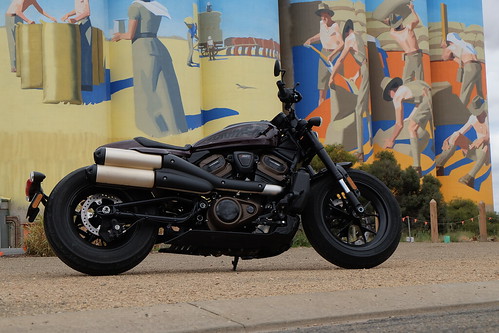
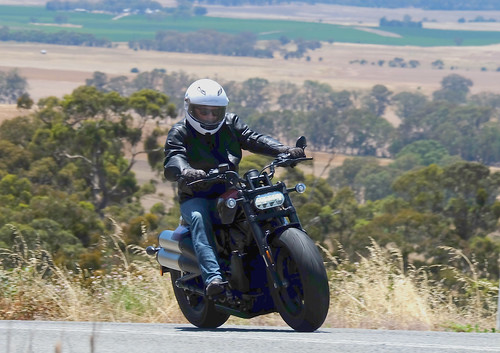
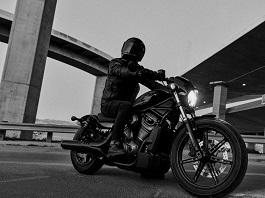
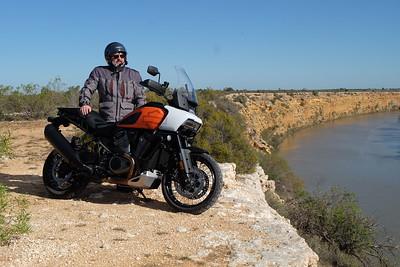
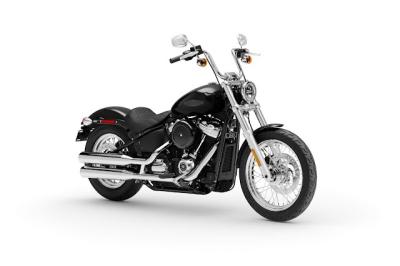
![Is 2023 Breakout the ultimate Harley-Davidson street machine? [video]](https://www.harleyheaven.com.au/media/mageplaza/blog/post/resize/400x/2/3/23-fxbr-breakout-lifestyle-bc-0005.jpg)


